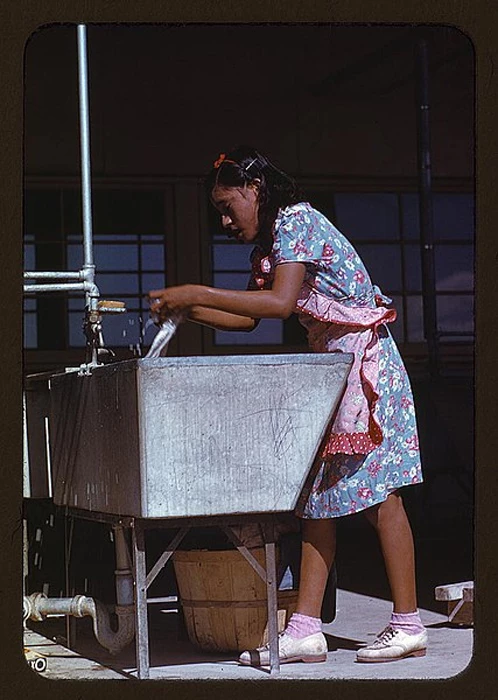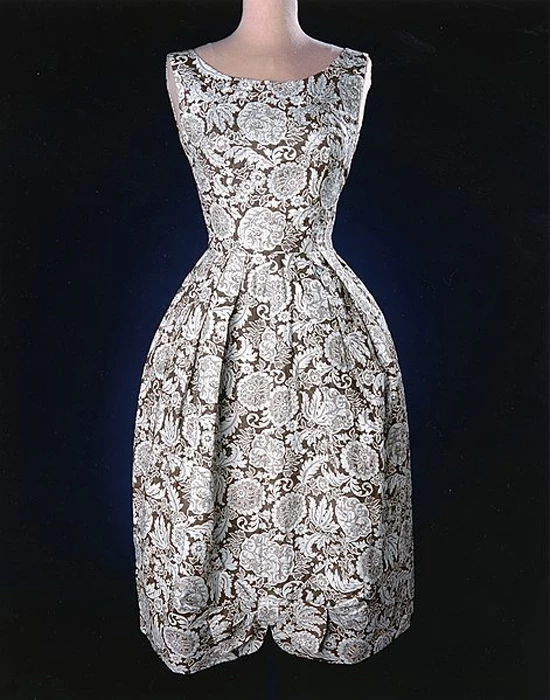As American sociologist Matthew Desmond said, “Eviction reveals people’s vulnerability and desperation, as well as their ingenuity and guts.” This was all too familiar to American families in the 1930s. What do you do when you find yourself in a tragic position when you don’t have the means to provide the necessities? What drove American housewives to clothe their families with flour sacks?
The Roaring Twenties, a period marked by a lack of inhibitions and decadent consumerism, saw American culture flourish. The government’s interference in business was low at this point due to a laissez-faire mindset.
But this was a dangerous game, and when compared to the following decade, the contrast is striking. After the Great Depression of 1929, households were left to fend for themselves, resulting in a “Do it Yourself” mentality. This light touch approach to corporate governance left many households in crisis.
A Country In Crisis
The Great Depression was an era in history that started with a devastating economic catastrophe in 1929, a crash that had global implications. The unemployment rate in America climbed from 3.2 percent in 1929 to 24.9 percent in 1933, an all-time high.
In just one year, the number of unemployed persons has tripled. Housewives had been pushed to become more resourceful in meeting their families’ fundamental requirements. Enter the commonplace flour sack.
Technology advancements in the mid-nineteenth century ushered in a slew of new machinery, including sewing machines. Flour and animal feed producers, looking for efficiencies which these new devices could bring, realized they could save money by putting their products in cotton bags. Previously, flour was transported in wooden barrels, which was both costly and inconvenient.
- The Mystery Of The Concealed Shoes: Why Were They Hidden In Walls?
- Why did Soviet Parents Leave their Babies to Sleep in the Snow?
People also saw that these sacks left a waste item that might be reused. They were keenly aware that ingenuity was now valued over excess. Housewives began to repurpose flour sacks into items of clothing.

This wasn’t the first-time flour bags were reused. Cotton fabrics were repurposed into sacks that farmers would tie to their horses to transport grains to be processed. Tablecloths, diapers, and other home items were also made from the bags by seamstresses. Why spend money on cotton when you already have some lying around?
Soon after, flour manufacturers began to notice the growing trend among the general public. They recognized a chance to profit from this new trend. Various companies started printing attractive patterns and designs on the bags to appeal to people of various ages, genders, and interests. Companies didn’t stop at merely printing attractive graphics on the sacks; they also supplied instructions.
A Flourishing Enterprise
To remove the logos and print, one would have to soak the cotton in lard or kerosene. Sadly, many people could not afford such luxuries during an unprecedented period of poverty and misery. Enterprising flour businesses started printing their brands in water-soluble ink and included directions on how to wash both the logo and the instructions off the bags. The materials became more desirable as a result, and they were no longer a walking advertisement for the flour sack manufacturers.
People interviewed at the time were clear as to the benefits. One woman in Virginia wrote “Back then, feed was sold in sacks. I believe they held almost 100 pounds of seeds. A number of farmers who didn’t sew returned the sacks for resale… I actually made hair bows, pants and dresses from the sacks.”
She went on to say “Mama always sewed on a Singer treadle sewing machine and made our dresses from flour sacks. She made sure Dad would get two sacks just alike. That was what the pattern took to make the dresses right.” Clearly this was a key resource for struggling families.
- Black Cat Superstition: Good and Bad Luck Beliefs
- Special Delivery: It Used to be Legal to Post Your Baby!
Articles on how to make your own flour soak garments would be published in newspapers, magazines, and booklets. Women would even trade patterns and techniques, increasing the variety of fashions available.
The trend was so popular that women started small enterprises to sell their sewing abilities. They would occasionally sell the extra flour only to be left with the cotton sack. An item that had previously been overlooked becomes the basic material for dressing the entire family.

It’s estimated that 3.5 million American men, women, and children were draped in the gorgeous patterns printed on flour sacks at this time. Because of the vibrant patterns, shapes, and decorations, it was impossible to discern that the clothes had been repurposed from a flour sack. Many women learned to sew during the crisis, which later led to sewing competitions springing up across the nation.
With War Comes Change
America began to recover from the Great Depression by the end of the 1930s, but World War II broke out in 1939. Cotton, which was needed to produce uniforms for the soldiers, was again in short supply, which nearly put an end to this new venture.
Fortunately for the housewives, cotton flour sack production was regarded as critical for numerous sectors. Housewives were also enlisted to assist in the production of thousands of uniforms for soldiers who were being deployed overseas. Cotton sacks were eventually phased out in as late as the 1960s, replaced by more cost-effective alternatives such as paper.
Fashion trends that were widespread across America during the 1929s have left traces on today’s fashion industries. The gingham design, for example, was first printed on this simple domestic staple and can now be seen in high street stores.
The awful irony is what remains: a fashion style that is fundamental to modern fashion culture arose from need rather than choice. “Necessity is the mother of invention,” as Plato famously said.
Top Image: During the Great Depression many items, including flour bags were recycled. Source: Unknown Author / Public Domain.
By Roisin Everard